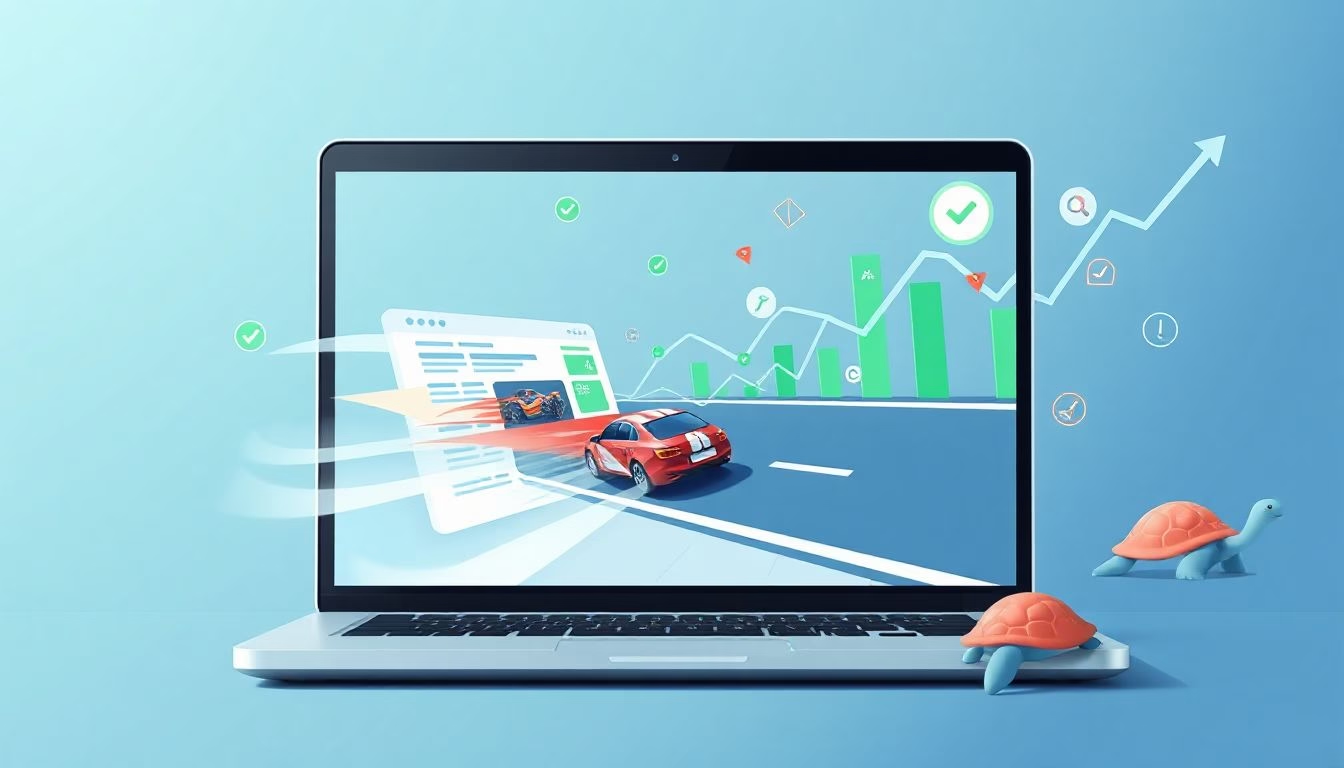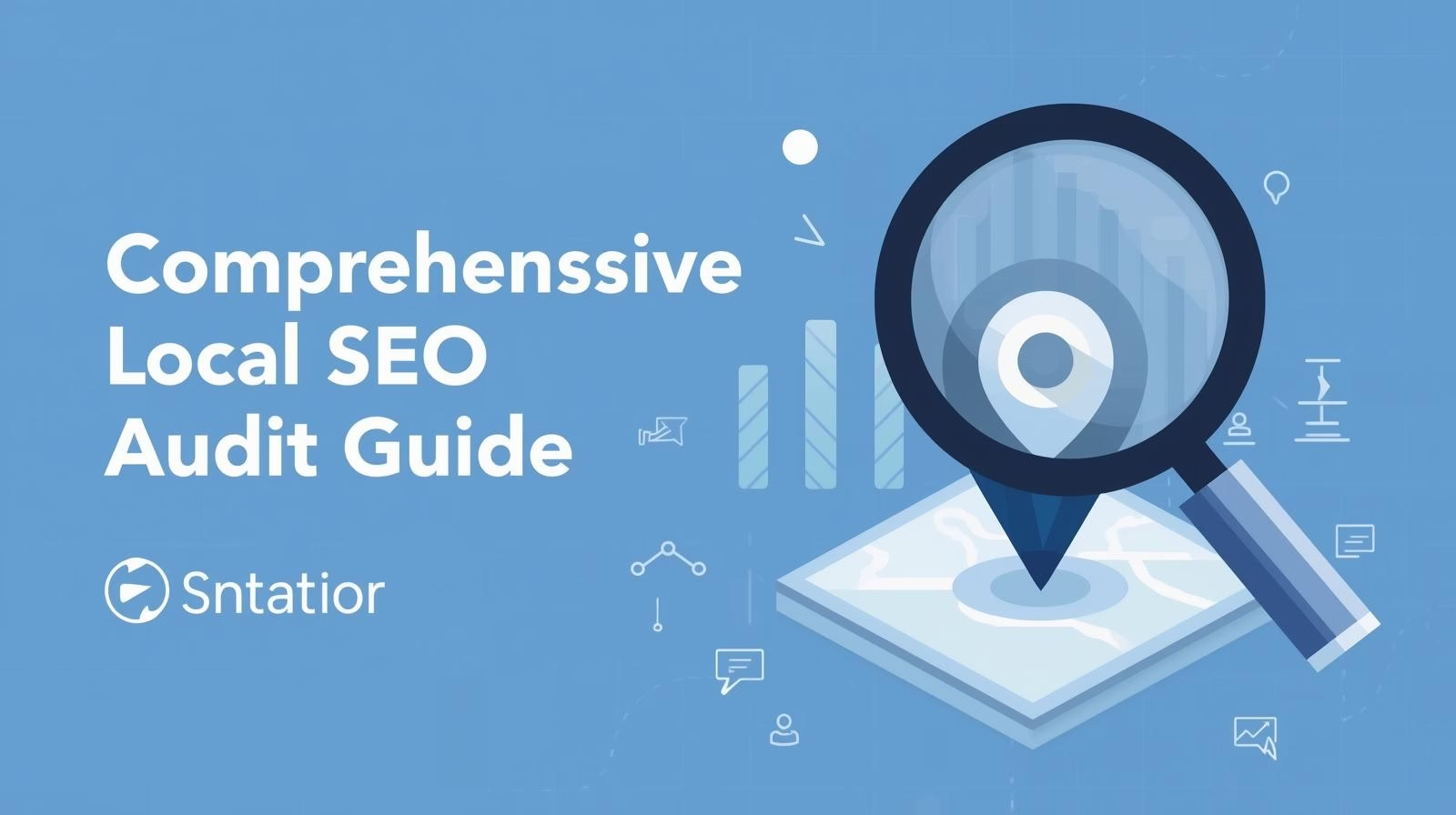Imagine you click a search result. The page takes forever to load. You leave in seconds. That lost visitor hurts your site. In fact, slow speeds can tank your search rankings and scare away customers.
Website speed goes beyond tech talk. It shapes how users see your site and how search engines rank it. Google puts speed at the heart of SEO success. This piece breaks down why speed counts. We look at Google’s tools and tips. Plus, you get steps to fix slow sites.
How Google Measures and Prioritizes Website Speed
Google tracks site speed to pick top results. They started this push years back. Back in 2010, they announced the Speed Update. It made load times a ranking factor. Now, it covers phones and computers. Slow pages drop in search lists.
This focus helps users get quick info. Google wants sites that load fast. They use special checks to score pages. These checks tie right into SEO scores.
Core Web Vitals: The Key Metrics for Speed
Google rolled out Core Web Vitals in 2020. These measure real user feels. The main ones are Largest Contentful Paint, First Input Delay, and Cumulative Layout Shift.
Largest Contentful Paint, or LCP, tracks how long the big part of a page takes to show. Aim for under 2.5 seconds. First Input Delay, now called Interaction to Next Paint, checks clicks and scrolls. Keep it below 100 milliseconds. Cumulative Layout Shift stops surprise jumps on screen. Score under 0.1.
These metrics hit SEO hard. Google says good scores boost rankings. Check Google’s docs for full details. They update them often.
Bad scores mean lower spots in search. Users hate waits. So, fix these to climb higher.
Page Experience Signals in Search Rankings
Speed fits into page experience. Google mixes it with mobile-friendliness and safe browsing. The 2010 Speed Update kicked this off for mobile. It grew to all devices by 2018.
Slow sites slip several spots in results. Google notes this in their blog posts. Fast pages win when rankings are close.
You can test this. Use tools to see your score. Then tweak for better placement.
The Role of Crawl Budget and Indexing
Google bots crawl your site. Slow pages eat up their time. This cuts crawl budget. Your full site might not get indexed.
John Mueller from Google warns about this. Heavy pages slow the whole crawl. Use Google Search Console to watch stats. It shows crawl errors and speeds.
Fix slow spots. This helps index more pages. Better indexing means stronger SEO.
Impact of Website Speed on User Experience and Bounce Rates
Users judge sites quick. Slow loads frustrate them. This leads to high bounce rates. Search engines spot this and drop rankings.
Fast sites keep folks around. They click more and stay longer. That signals quality to Google. Better engagement lifts your SEO game.
Think of it like a store. If doors stick, shoppers leave. Same with web pages.
Reducing Bounce Rates Through Faster Load Times
Delays spike bounces. Google data shows 53% of phone users quit after 3 seconds. Cut load times. Bounces drop.
Compress images to help. Tools like TinyPNG shrink files by 30 to 50%. This speeds things up fast.
Test changes. Watch your analytics. Fewer bounces mean better user ties.
Enhancing Mobile User Engagement
Google went mobile-first in 2018. Phones rule searches now. Slow mobile pages lose big.
Amazon found each 100ms delay cuts sales 1%. Make sites responsive. Try AMP for extra speed on news sites.
Progressive web apps work too. They load like apps. Users engage more on phones.
Keep mobile under 3 seconds. This holds attention and boosts SEO.
Building Trust and Lowering Abandonment
Slow sites feel unreliable. Users think the site is broken. Trust fades fast.
Akamai studies show delays hurt views of quality. Pogo-sticking rises, users bounce back to search.
A/B test speeds with Google Optimize. See what keeps users. Fast loads build loyalty.
Users stick when pages snap open. That cuts abandonment and aids SEO.
Website Speed’s Direct Correlation to SEO Rankings and Traffic
Speed ties straight to rankings. Fast sites edge out slow ones. Organic traffic grows too.
Google calls speed a tiebreaker. In tight races, quick pages win. Improvements show in weeks.
Track this. Speed tweaks lift visits by 7%, per Google stats.
Improved Search Engine Rankings
Speed affects all devices since 2016. Google says so in updates. Aim for PageSpeed scores over 90.
Audit with PageSpeed Insights. It flags issues. Fix them for rank jumps.
Competitors lag if you’re fast. Claim those top spots.
Boosting Organic Traffic and Conversions
Faster sites pull more visitors. Walmart saw 2% conversion lift per second saved.
Enable caching. It stores files for quick pulls. Minify CSS and JS. This shrinks code sizes.
These steps grow traffic. Conversions follow. SEO shines brighter.
Competitive Edge in Local and E-commerce SEO
Local searches favor speed. Slow sites miss map packs. Fast ones grab spots.
In e-commerce, delays kill carts. Use WP Rocket for WordPress. It speeds shops.
Moz stresses speed for long-tail keywords. Target those with quick pages. Gain an edge over rivals.
Common Causes of Slow Website Performance
Many sites drag. Images, code, and servers cause it. Spot these to fix SEO hits.
WordPress sites often bloat with plugins. Shopify stores face media woes. Know the culprits.
Start simple. Check your setup. Then clean up.
Large Images and Unoptimized Media
Images hog bandwidth. They make up 50 to 70% of page weight. Big files slow everything.
Switch to WebP format. It saves space. Lazy load images too, they appear as users scroll.
Google suggests under 100KB per image. This keeps LCP low.
Inefficient Code and Third-Party Scripts
Bloated code blocks renders. Plugins add scripts that slow first paints.
Defer JS for later. Audit with GTmetrix. It shows blockers.
Google guidelines push clean code. Remove extras for speed.
Poor Hosting and Server Response Times
Shared hosting lags on TTFB. Servers take too long to reply.
Upgrade to a CDN like Cloudflare. It cuts times by 60%. BBC uses it for big traffic.
Pick fast hosts. This fixes root issues.
Actionable Strategies to Optimize Website Speed for Better SEO
Ready to speed up? Start with basics. Then layer on tools. See SEO rise.
These steps work for any site. Beginners grab quick wins. Pros refine more.
Track progress. Adjust as needed.
Implementing Caching and Compression Techniques
Caching stores pages. Next visits load instant. GZIP compresses data by 70%.
Use W3 Total Cache plugin. It sets this up easy.
Run Lighthouse audits. Check for SEO fit. Keep it fresh.
Optimizing Images and Resources
Smush or ShortPixel automate image fixes. They cut sizes without loss.
Aim for 2.5-second LCP on mobile. Lazy load videos too.
Test on real devices. This ensures smooth SEO.
Leveraging Tools and Regular Monitoring
Google PageSpeed Insights is free. It scores and suggests fixes.
WebPageTest dives deeper. Set budgets for performance.
Barry Schwartz from Search Engine Roundtable says test monthly. This holds rankings steady.
Conclusion
Website speed drives SEO forward. It lifts rankings, keeps users happy, and grows traffic. From Core Web Vitals to crawl fixes, every bit counts.
Key points: Hit Google’s metrics. Audit often with free tools. Compress images for fast wins.
Test your site now. Speed changes can push you up. It’s key for SEO wins.


